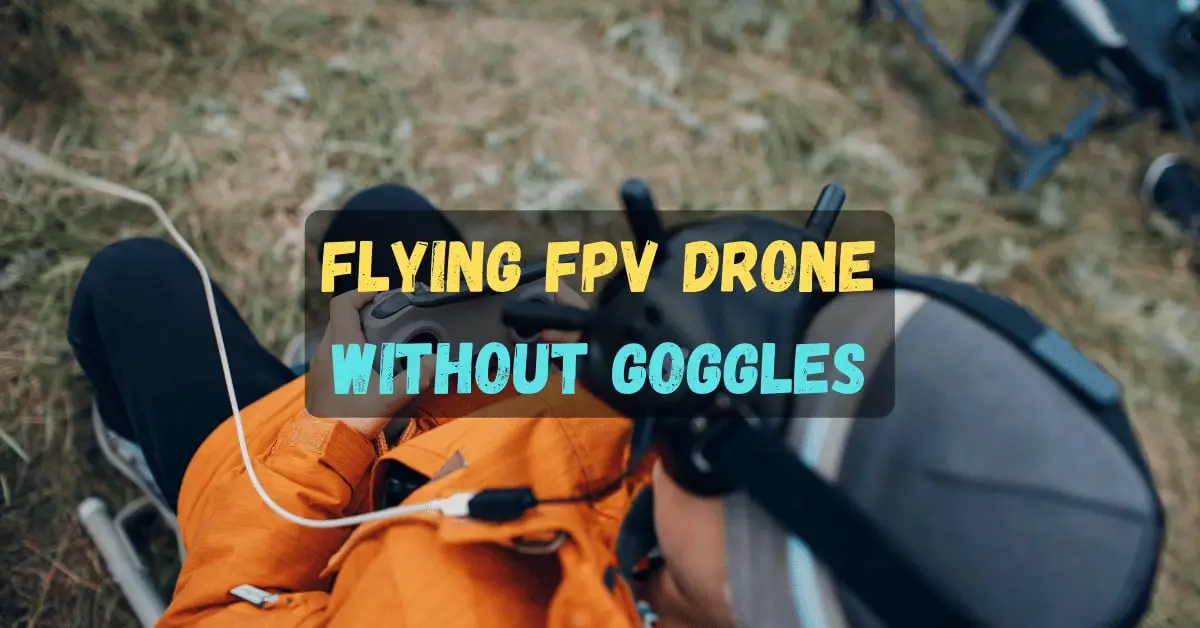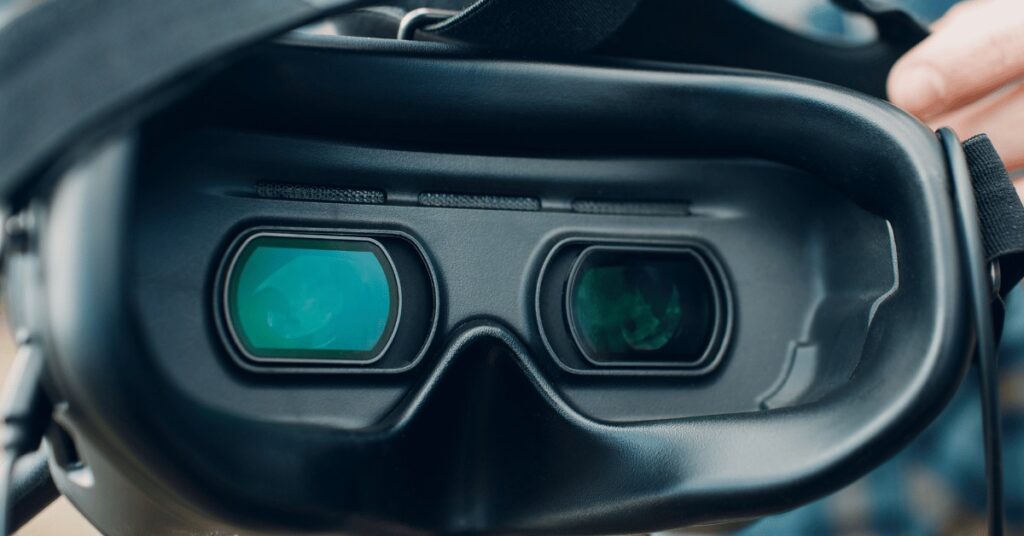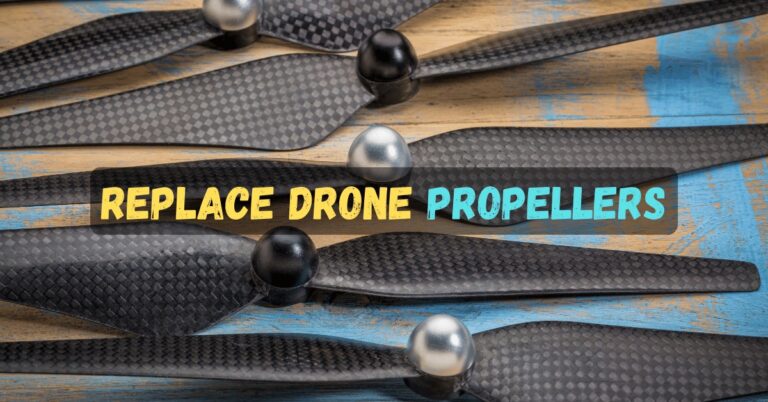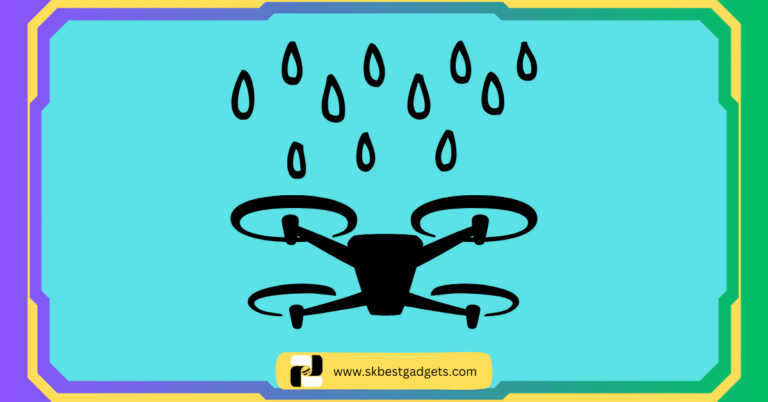Can You Fly an FPV Drone Without Goggles?

Are you curious about whether you can fly an FPV drone without goggles? It’s a controversial topic in the drone community, with passionate arguments on both sides.
Can You Fly an FPV Drone Without Goggles?
Yes, you can fly an FPV drone without goggles, but it’s not recommended. Flying without goggles can be dangerous, as seeing and controlling the drone is harder. Additionally, many drone racing leagues require pilots to wear goggles for safety.
Some pilots swear by goggles for an immersive experience, while others prefer to fly without them for greater awareness of their surroundings.
In this article, we’ll explore the pros and cons of flying without goggles and what you need to know to make an informed decision.
Is Flying an FPV Drone Without Goggles Safe?
Flying an FPV drone without goggles may seem tempting for some pilots, but is it safe? The short answer is no, and it’s not recommended. Here’s why:
Lack of Visual Awareness: Flying with goggles reduces the pilot’s situational awareness, making avoiding obstacles or other drones in the area easier. It can lead to collisions and crashes, endangering people and property.
Limited Control: Goggles provide a more immersive experience, allowing pilots to see the drone’s position and orientation in three-dimensional space. With goggles, controlling the drone precisely is more accessible, especially at high speeds or in complex maneuvers.
Legal Restrictions: Many countries and drone racing leagues require pilots to wear goggles while flying, as it’s considered an essential safety requirement. Flying without goggles may result in legal consequences, fines, or imprisonment.
What Are the Pros and Cons of Flying Without FPV Goggles?
Flying an FPV drone without goggles is a topic that sparks much debate among drone enthusiasts. Some pilots prefer to fly without goggles, while others swear by them for a more immersive experience. Here are some of the pros and cons of flying without FPV goggles:

Pros:
- Greater situational awareness: Flying without goggles can give you a better sense of your surroundings, which can be especially helpful if you’re flying in a new or unfamiliar location.
- Less expensive: FPV goggles can be expensive, so flying without them can be a more cost-effective option.
- More comfortable: Some pilots find FPV goggles uncomfortable to wear, especially for extended periods of time.
Cons:
- Decreased immersion: Flying without goggles means you won’t get the same immersive experience as you would with them. This can be a drawback if you’re looking for a truly immersive flying experience.
- Less precise control: Without goggles, it can be harder to see small details and control the drone with precision, which could be a disadvantage for drone racers or aerial photographers.
- Potential safety issues: Without goggles, it’s easier to lose track of your drone and potentially fly it into obstacles, putting yourself and others at risk.
Ultimately, whether or not you choose to fly with goggles depends on your preferences and the flying you plan to do. It’s essential to weigh the pros and cons before deciding and always prioritize safety when flying your drone.
Can You See Enough Detail Without Goggles to Fly an FPV Drone?
Flying an FPV drone without goggles can seem tempting, but the question remains: can you see enough detail without them to fly safely? Let’s look at the advantages and disadvantages of flying without goggles.
Advantages of Flying Without Goggles
Without goggles, you’ll have a better view of your surroundings, which can help you navigate around obstacles and stay aware of your environment. You’ll also see the drone’s orientation in the sky, which can help with positioning and landing.

Disadvantages of Flying Without Goggles
One of the main disadvantages of flying without goggles is the lack of detail you’ll be able to see. With goggles, it can be easier to see small obstacles and judge distances accurately. Additionally, you’ll miss out on the immersive experience of flying with goggles.
While it’s technically possible to fly an FPV drone without goggles, it’s not recommended. Flying without goggles can be dangerous and may result in injury or property damage. Always prioritize safety when flying your drone; use goggles for the best experience.
Read More: How to transfer photos from DJI Mavic Pro to computer?
How Does Flying Without Goggles Affect Your Perception of Depth?
Flying an FPV drone without goggles can significantly impact your perception of depth. Without the ability to judge distance accurately, navigating through tight spaces or avoiding obstacles can be challenging. Let’s explore this in more detail:
Lack of Depth Perception
Flying an FPV drone without goggles means you’re relying solely on the visual information provided by the camera mounted on the drone.
This view can lack the cues necessary to perceive depth accurately, making it challenging to determine how far away objects are from the drone.
With this information, it can be easier to avoid collisions, which can damage the drone or cause injury.
Disorienting Effect
Without the ability to judge depth, flying an FPV drone without goggles can also cause disorientation. Pilots may feel a sense of vertigo or confusion when trying to maneuver through complex environments.

It can lead to crashes, lost drones, and frustration for pilots trying to improve their skills.
Alternative Options
If you’re concerned about the effects of flying without goggles on your perception of depth, alternative options exist.
One option is to use a monitor instead of goggles to view the drone’s camera feed. While this won’t provide the same immersive experience as goggles, it can still offer a clear view of the drone’s surroundings and allow for better depth perception.
Is It Harder to Control an FPV Drone Without Goggles?
When flying an FPV drone, goggles can be a critical piece of equipment. But is it harder to control an FPV drone without goggles? The short answer is yes, and in this section, we’ll explore why that’s the case.
Depth Perception Challenges
With goggles, pilots may be able to gain depth perception, which can make it easier to gauge distances and maintain altitude. It can result in crashes or near misses.
Reduced Visibility
Flying without goggles can also limit the pilot’s field of view, making it harder to spot obstacles or other aircraft. It can be hazardous in crowded or complex flight environments.
Distractions
Finally, flying an FPV drone without goggles can be distracting. Pilots may be more tempted to take their eyes off the drone to look at the controller or other environmental factors, which can lead to crashes or other mishaps.
Are There Any Legal Restrictions to Flying Without Goggles?
Flying an FPV drone without goggles can be a tempting proposition for some pilots, but it’s essential to consider any legal restrictions before doing so. Here’s what you need to know:
Regulations Vary by Location
Different countries, states, or even cities may have regulations on FPV drone flying. Researching and following the rules for your specific location is essential to avoid any legal troubles.
Safety Concerns
Many regulatory agencies require pilots to wear goggles while flying FPV drones for safety reasons. With goggles, seeing obstacles or other aircraft is more accessible, which could lead to accidents.
Penalties
If you violate the regulations on FPV drone flying, you could face severe consequences, such as fines, confiscation of your drone, or even legal action. It’s essential to take these regulations seriously and follow them to avoid penalties.
READ MORE: How to take off and land a DJI FPV drone?
What Are Some Tips for Flying Without Goggles Safely?
While flying an FPV drone without goggles isn’t recommended, there are some situations where you might need to do so. Here are some tips to help you fly safely without goggles:
Keep the Drone in Your Line of Sight
When flying without goggles, keeping your drone in your line of sight at all times is essential. It will help you maintain control and avoid obstacles. Try to fly in a clear, open area where you can see your drone easily.
Use a Spotter
Have a spotter with you to help keep an eye on your drone. This person can alert you to obstacles or hazards you might not see otherwise. Ensure you communicate clearly with your spotter and establish clear hand signals beforehand.
Fly Slowly and Carefully
When flying without goggles, taking things slowly and carefully is essential. Start with small movements and practice basic maneuvers before attempting more complex ones. Remember, flying without goggles is more complicated and requires greater situational awareness.
Follow Local Regulations
Ensure you know the local regulations for flying drones without goggles. In some areas, it may be illegal to fly without goggles, or there may be restrictions on where you can fly. Make sure you follow these regulations to avoid legal trouble.
How Does Flying Without Goggles Impact Your Ability to Fly FPV Races?
Flying without goggles can significantly impact your ability to fly FPV races. Here’s how:
Reduced Visibility: Without goggles, you’ll have a more challenging time seeing your drone’s position, making it more difficult to navigate through obstacles and fly at high speeds.
Distractions: When flying without goggles, it’s easier to become distracted by your surroundings. It can cause you to lose focus on the race and potentially crash your drone.
Lack of Immersion: Goggles provide an immersive experience, allowing you to feel like you’re actually in the cockpit of your drone. Flying without goggles can make it feel less like a first-person view, impacting your racing performance.
Difficulty Judging Distance: When flying without goggles, it can be challenging to judge distances accurately, making it more likely to collide with objects.
Can You Use a Monitor Instead of Goggles for FPV Flight?
If you’re not a fan of FPV goggles, you might wonder if there’s an alternative way to fly your drone. Luckily, using a monitor is an option and has its benefits. Consider what you need to know about using a monitor for an FPV flight.
Benefits of Using a Monitor
Using a monitor can be more comfortable and less immersive than wearing goggles. You can also share the experience with others by having them watch the monitor screen.
Additionally, monitors tend to be less expensive than goggles, which can make them a more accessible option for new pilots.
Things to Consider Before Using a Monitor
While using a monitor may be more comfortable, it does have some downsides. Monitors don’t provide as immersive of an experience as goggles, and they can be affected by glare or reflections.
Additionally, the screen size of a monitor may be smaller than that of goggles, which could impact your ability to see fine details.
How Does Flying Without Goggles Affect Your Immersion in the Experience?
Flying an FPV drone without goggles can significantly impact the pilot’s level of immersion in the experience. Here’s a closer look at how it can fully affect your ability to immerse in the drone flying experience fully.
Distraction from Your Surroundings
When flying an FPV drone without goggles, it’s easy to get distracted by your surroundings. Without the immersive experience of the goggles, you may find your attention wandering to other things happening around you.
It can make it harder to stay focused on the drone and reduce your immersion level in the experience.
Limited Field of View
Flying without goggles can also limit your field of view. With goggles, you have a wider field of view, allowing you to see more of your surroundings and feel inside the drone.
You may feel more detached from the experience without goggles, as your field of view is more limited.
Less of a Racing Experience
If you’re flying an FPV drone as part of a racing league or competition, flying without goggles can make it feel less like an actual race.
The immersive experience of the goggles can make it feel like you’re genuinely racing against other pilots, whereas flying without goggles can feel more like flying a drone around. It can reduce the excitement and thrill of the experience.
Important FAQs
Can you fly DJI FPV without a phone?
What are DJI FPV goggles?
How long does the DJI FPV battery last?
How do I connect my FPV drone to my phone?
What is DJI Aviator without a phone?
What is DJI Mini 3?
What is DJI Mini 3 Pro?
What are DJI Goggles 2?
Final Thoughts
Flying an FPV drone without goggles is possible but not recommended if you want to immerse yourself in the experience fully.
The goggles provide a wider field of view and help eliminate distractions, making it easier to control the drone and feel like you’re genuinely racing against other pilots.
If you’re serious about FPV drone flying, investing in a good pair of goggles is highly recommended. Remember always to prioritize safety and follow the rules and regulations in your area.
Please share your thoughts in the comments below, and share this article with others who may find it helpful.
Does the DJI Smart Controller Work with DJI Air 2S?
“Upgrade your drone game with the DJI Air 2S? 🚁🎮 Find out if the DJI Smart Controller is the perfect match! Don’t miss this tech-savvy article – see if they’re a dynamic duo! 📱💫”







